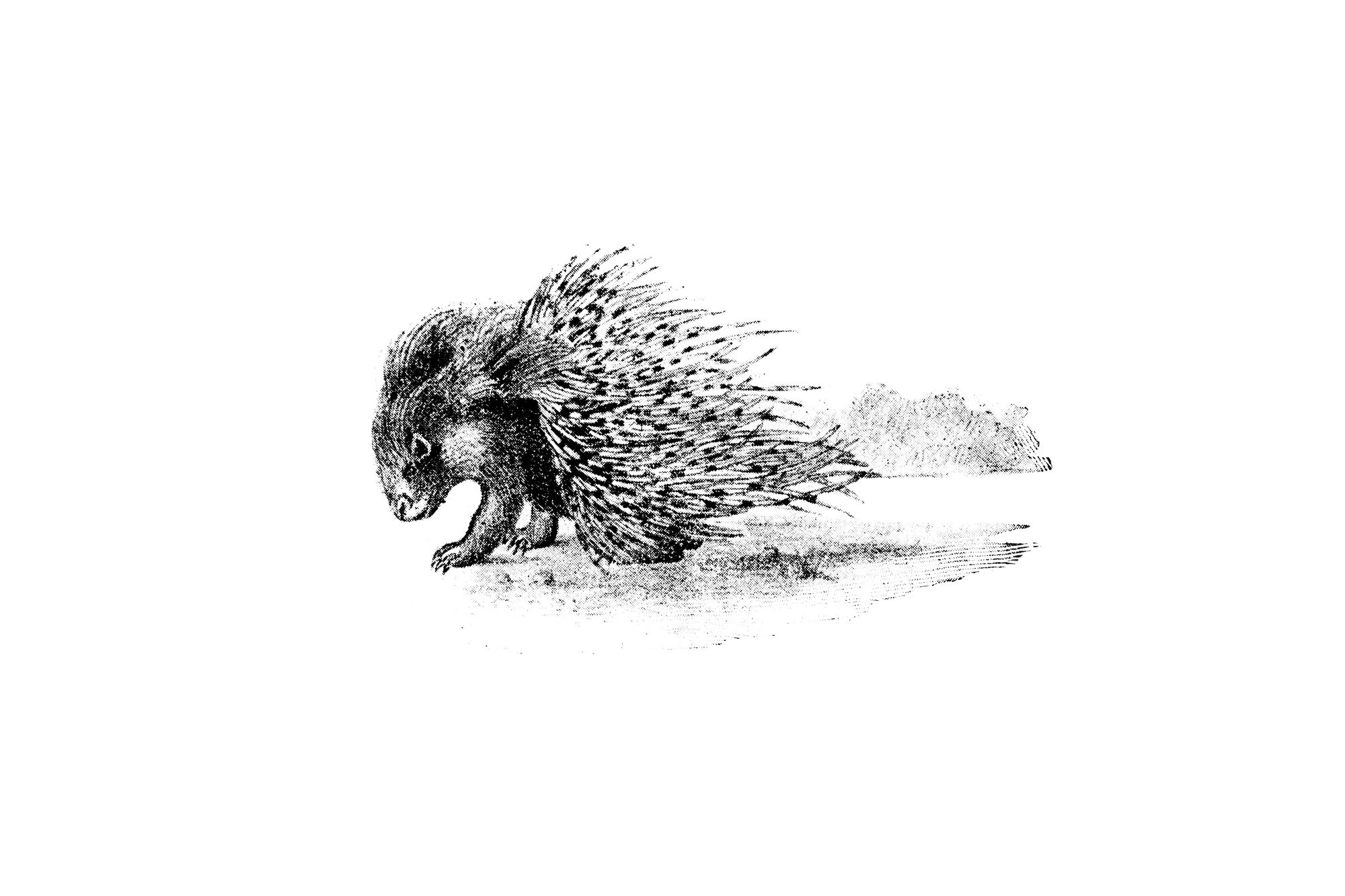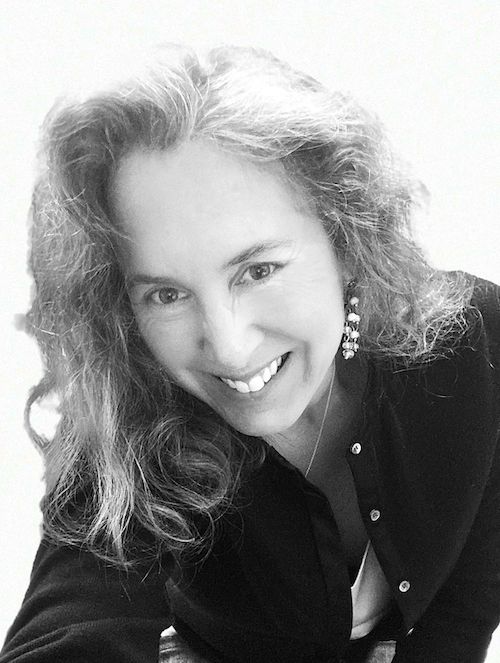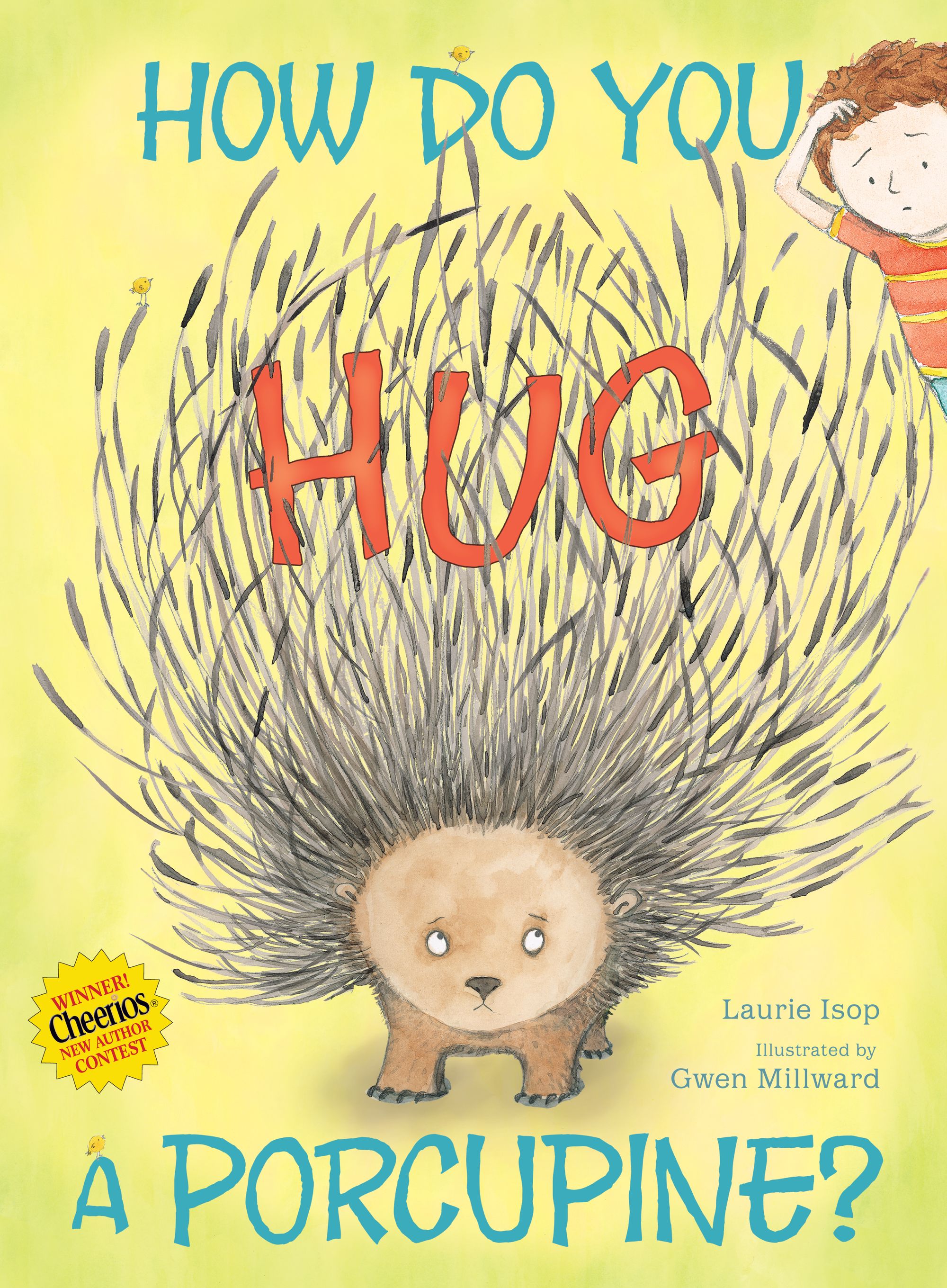
Navigating the Publishing Industry
The award-winning author of How Do You Hug A Porcupine? (published under the name Laurie Isop), Laurie Austin, is an accomplished story developer, earning her B.A. in English/Creative Writing from Western Washington University and has collaborated on dozens of titles over her career.
Laurie considers herself a savvy wordsmith and concept strategist brimming with moxie—passionate about helping writers at all levels find their authentic voice while she develops their stories. The majority of her collaborative projects have gone on to become published works.
Making her home in Seattle—with her husband, a cat that seems more like a dog, and the usual assortment of dust bunnies under the bed—Laurie shares advice on navigating the publishing industry, from self-pub to traditional publishing.
This interview has been edited for length and clarity.

Ruth Sabin: Let's go back in time. You are a 20-year-old writer—what would you tell yourself not to do?
Laurie Austin: Yeah, I would tell myself not to fall into the trap of being too easily influenced by what someone else is writing or what you've been reading and studying and maybe reviewing at the local library. Because it's probably the surest way to lose your own voice. And I think it's really easy to fall into that and go, “Oh, here are 10 books with a certain theme or topic that were published. So, I'll do that.”
I'd also tell myself, “Don't go it alone.” Find a writers’ group; find people who can give you real actionable feedback. And those might be unexpected people; people who aren't necessarily in the writing industry. You might find that some of your very best feedback on your ideas and on your manuscripts come from unexpected sources. I would definitely caution against being too pigeon-holed in terms of where you're seeking feedback.
And then I'd also tell myself not to neglect contests. I used to think contests were, you know, nobody ever wins those things. And why bother? But it's a really, really good place to gain exposure. You'll learn how to write for a specific purpose or a specific set of judging criteria. I think that's super valuable.
Ruth: I feel like, as writers, we tend to isolate, especially at the beginning of a lot of our careers. And for whatever reason, we never branch outside that isolation until well into our writing journey. I think, recognizing that on an early standpoint of a career can be such a shortcut in terms of finding the support that you really need to launch a career long-term.
You self-published and you were traditionally published. Can you touch on some of the biggest challenges you faced with both of those routes?
Laurie: I'll start with self-publishing. That is a real challenge because you just don't have somebody to kind of step in and take over the project for you. Both of my projects that were self-published were picture books, and I would say a huge challenge was finding an illustrator. Certainly, one that was affordable, and who was willing to go the distance with the project because it takes longer than you might think, especially with illustrations. I found that it helps if you've got a really clear vision for how you envision your content to be displayed on the pages. That's really, really helpful.
For my first project—because I was on a budget—I reached out to several schools and art colleges to see if any of the students wanted to take on the project as a portfolio piece, and I found a great illustrator that way. In the end, that title actually wound up winning the national competition and was subsequently turned over to a publishing house. I was able to pass on all of the ideas and the ground-level work that we'd gotten started to incorporate into the finished book.
Now, the challenge with self-publishing is you don't have an editor, you know, kind of nipping at your heels with deadlines. So, you've got to make a schedule and really hold yourself accountable. Otherwise, it'll take five years. And that's easy to have that time just slip by.
In terms of the traditional publication route, it's a really long process, and that was a surprise to me. I'd say maybe 18 months at its quickest to bring your manuscript from submission to market. So, being patient while working with an editor. In my case, my editor kept asking me for more organic language, which to me I had provided, but you've got to remember that publishing houses want stories that sell. That might mean you've got to revise your thinking a little bit to effectuate that.
I think maybe the last thing is just that writing might be kind of a solitary endeavor, but publishing is very collaborative. And again, just being aware of all of that—it won't be just you anymore.
Ruth: When you said about an 18-month period as a quick route for traditional publishing, is that from submission to actually having a book on the shelf? Or are you talking about from once the publishing house actually accepts the manuscript?
Laurie: It would be once you've submitted a manuscript and it caught somebody’s interest, you sign a contract, and they go down the road of actually bringing it to market.
Ruth: Prior to that, you and your literary agent are shopping it to publishing houses trying to catch that interest. Which could take an amount of time as well. You definitely have to commit to the long road forward if you go through the traditional publishing route.
Laurie: You do, yes. Unless you get lucky.
Ruth: At what point would you suggest a writer attempt self-publishing over the traditional publishing route?
Laurie: Honestly, right from the get-go. The reason for that is it's just an incredible process and journey. You will learn so much about layout and format and editing and how books are bound and cover design and distribution and copyright protection. All of those things are critical to have some familiarity with because you'll be faced with them if you wind up with a traditional publisher. Get your feet wet and go that route on your own, so that you can start to learn what it's like outside of the task of writing.
A lot of publishers will shy away from a self-published work, but some won't. It's common for them to kind of be like, “Oh, we don't accept self-published work.” But if you can sell 4,000 copies of your book on your own? You will get their attention. That's a challenge. But if you've got numbers like that behind you and you're self-published? Yeah, you'll have something really valuable to put in your query letter. Of course, it feels fabulous to have your first case of books arrive. So, I think that's another reason to self-publish.
Ruth: I can imagine that's a great feeling. There are a lot of writers and publishing houses who tend to have a negative viewpoint, for whatever reason, on self-publishing, but in a lot of ways, it's an admirable route to take for the writer to have to learn the market and learn that savviness of how to do it themselves. I see that, in some ways, it's even more of a challenge than the traditional route. Or at least different challenges, you know?
Laurie: Yeah, I think it takes some pluck. That's for sure.
Ruth: That's a good way of putting it. Getting a little personal here … what would you name as your greatest accomplishment? What are you most proud of as a writer?
Laurie: Honestly, the title that won the national contest, and then Simon and Schuster picked it up. That was How Do You Hug a Porcupine? Personally, that's really my greatest accomplishment because it started as a personal project that I was working to self-publish, and then it got all the way over the finish line. I had set a personal goal of being published by 40 and the book arrived literally one week before my 40th birthday. That was really huge. It would still be seven months, though, before it hit store shelves. So, again, just that reality of bringing it to market, but having the book show up … it made it very real. I felt at that point, I could say, “Hey, I'm an author.” And that's something I really always wanted to claim.
In terms of what makes me most proud, it's actually when I'm asked by other people to evaluate their work. It's super humbling. You've got to be really brave to put your work out there and ask for feedback. The accomplishment of being published is one thing, but the proud moment is actually when somebody validates that and says, “Hey, could you look at mine?”

Ruth: You give very freely in that arena. For anybody who's going to read this interview, don't break down Laurie's doors or anything, but if she gives you the opportunity, absolutely take it. Writers definitely have to give into each other’s work. And I appreciate you doing that even for me.
This is the hard question that all writers have to deal with—rejection. How much rejection did you have to deal with before you got your first “yes,” and tell us about that affirming moment for you specifically?
Laurie: Rejection’s really common, which you know, everybody knows. But it's also kind of relative. I had written a picture book about a boy and his bicycle. I really wanted to do a picture book aimed at boys because I had been reading in some of the publications that there was a shortage of stories aimed at boys, and I really liked the story. I was emotionally connected to it. I thought it had everything—rhyme and visuals and challenge and perseverance and a little bit of an emotional connection because of kids and their bikes. I sent it out, and I received dozens of lovely rejection letters. I pored over those replies. I mean, some of them were just short and sweet with three sentences. Others really had some nuggets of wisdom. I put those out and wrote a list of those nuggets. I went back to the manuscript and tried again.
It remains unpublished, but it's still one of my favorites. I would tell anybody to expect the rejection but use it as an opportunity to figure out what you can do better. There's usually some wisdom in those words.
When I got the first “yes,” which was with How Do You Hug A Porcupine? that process was so different because it was a national contest. It moved along pretty quickly. That moment when they called—that was a personal phone call—I was actually in the middle of cleaning a toilet. I was like down in it, you know what I mean? So, of course, I was shocked. I was delighted!
Biggest emotional feeling, I think was just utter validation. I was a little bit teary-eyed. Then you see your book actually inside boxes of Cheerios and your picture on the box. That was pretty huge.
Ruth: That's incredible. Going forward as a published writer, what is the most consistent challenge that you face from year to year?
Laurie: For me personally—don't hate me when I say it—carving out time to write. Personally, I have a lot of ideas—file folders stuffed full of ideas. I have almost too many that I don't know where to start or what to focus on. So, I pick one, and then I still have the blank page on the computer waiting for the words to come. But that's partly why I really like children's stories. And now I'm dabbling with screenplays because they are tighter projects. There's an end that's closer in sight for me than a novel. That makes me feel a little bit better about tackling that file folder full of ideas.
Ruth: I tend to have a similar problem with not really knowing what direction I want to go with the next concept. I've often told writers to gain input from people around them and to try to figure out which idea might be strongest to go with. I think one of the most valuable things a writer has is time. So, wasting time on a project that might not go forward, or that doesn't have a strong foundation, can be frustrating. But it can be a good problem to have a lot of great ideas in your portfolio because sometimes it's hard to come to that one great golden concept in and of itself.
As a new writer—putting yourself in their shoes—you've written your debut novel. So, what are your next two to three actionable steps that need to be taken now?
Laurie: Hire an editor who will tear it apart. If you're going to spend any money, I would say spend it on an editor. And two different areas that I'd focus on there—and it might require two different editors given their specialties—but somebody who’s going to just read it for grammar and all of the things that people get hung up on when they read somebody else's work. As an author, you can hear it in your head, but when it's written on the page, people are reading it the way that it's actually written, right? So, somebody reading for that purpose is critical. Then somebody else for overall story development, character development, plot setting, context, literary devices, games. Any area where it might fall short, that feedback is going to be huge. That would be the first step.
Then maybe once you've turned over your precious manuscript, get to work on your query letter and your elevator pitch. You really should be able to sum up the entire novel and gain someone's interest or pique their curiosity in about 60 seconds. And that's tough to do. So, write it out, read it out loud, watch the second-hand timer on the clock or set it on your phone, and then just keep polishing that down until you've really nailed it and you own it.
Ruth: Coming out of advice like this, we just need to know, “What can I do next?” I think that's always important to have.
Every writer out there should always be growing in their careers or maybe in their next project or their next endeavor. Tell us what you're doing now. What are the next steps for you? What's your next endeavor? What's your next ambition?
Laurie: That's a really good point. I've had been writing on-and-off for kids for the better part of 15 years, and really enjoying it and having some success and some challenges. The next step for me was trying to figure out—as I mentioned earlier—screenplay writing. I've dabbled with that, and that's a whole other genre and type of writing to learn in terms of format and how to get it right and what's wrong. So, I've tackled that here this spring and summer, and I'm really enjoying it.
Ruth: Very cool. Every writer should be growing with new things in mind and new projects. To push their boundaries. It makes you a better writer overall. Ultimately, writers are very much wholistic creators.
Laurie: Absolutely.
New Symposium: Wednesday, January 19th—"Beyond the Book: Creating a Writing Career," presented by Chantelle Aimee Osman. Reserve your spot!
*Feature image: Porcupine—Vintage Engraved Illustration 1889 By Walter Cicchetti